
Growing Your 3D Printing Business Just Got Easier
If you’re running a 3D printing service and struggling to attract quality leads, you’re not alone. The challenge isn’t just about having amazing technology or killer pricing – it’s about getting potential clients to trust you with their projects before they’ve even met you. That’s where smart lead magnets come in, and trust me, they can be absolute game-changers for your business.
The secret sauce? Offering real value upfront that showcases your expertise while solving immediate problems for your prospects. We’ve put together five powerful 3D printing services lead magnets that’ll have potential clients eagerly handing over their contact info – from practical checklists that save them headaches to cost calculators that demonstrate your transparency. These aren’t just random freebies; they’re strategic tools designed to position you as the go-to expert while building a pipeline of qualified leads who are already impressed with what you bring to the table.
1. A one-page Design for 3D Printing checklist to ensure parts are printable and cost-effective.
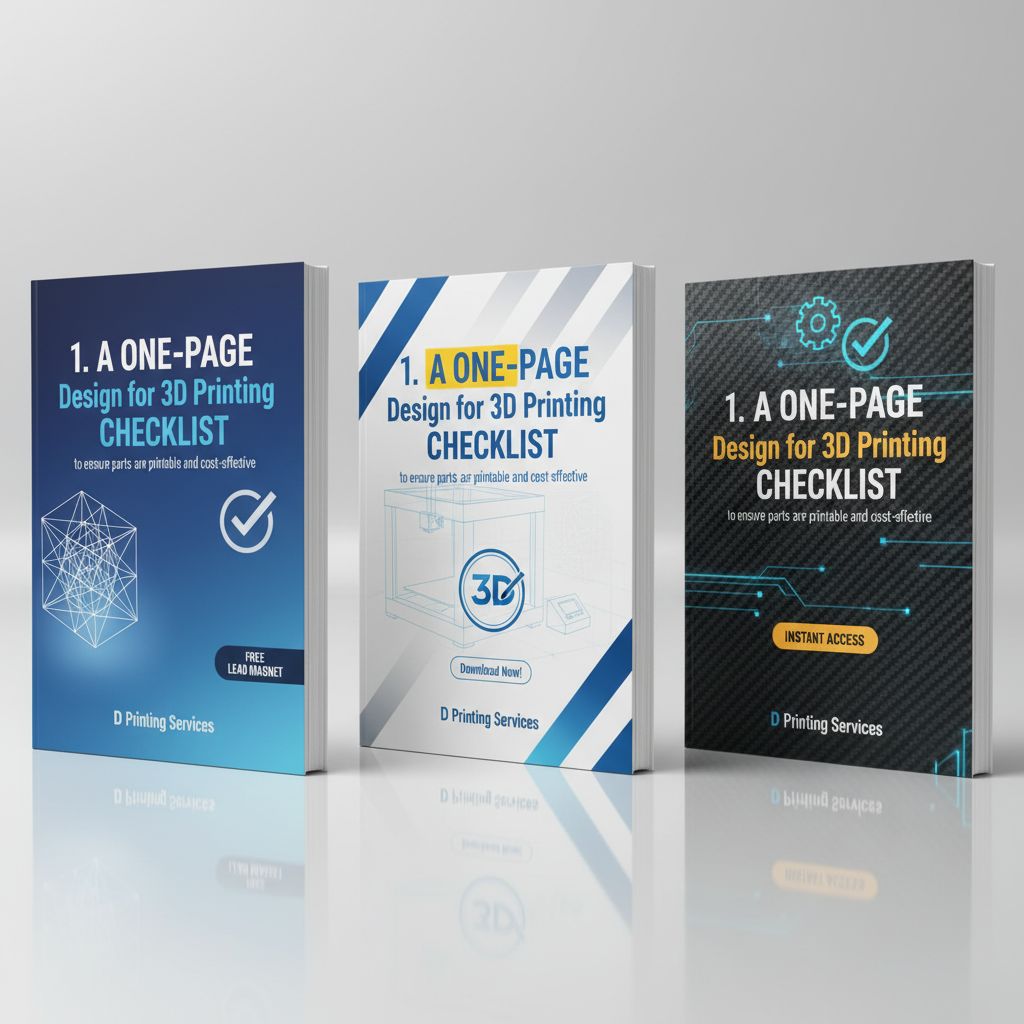
Why use this lead magnet?
Why This Simple Checklist Could Be Your Secret Weapon for Landing More 3D Printing Clients
You know that moment when a potential client walks in with a design that’s going to cost them three times what they expected, or worse – won’t even print properly? Yeah, we’ve all been there. That’s exactly why having a solid design checklist as a lead magnet is pure gold for your 3D printing business. When you offer something this practical upfront, you’re not just collecting email addresses – you’re positioning yourself as the expert who actually cares about getting their project right the first time. People love free stuff that solves real problems, and trust me, bad designs are a very real problem in this industry.
Here’s the beautiful part: this checklist does double duty as both a lead generator and a conversation starter. When someone downloads it, they’re essentially raising their hand and saying “I need 3D printing help.” Plus, you’re preemptively handling objections about cost and feasibility before they even become issues. Instead of having awkward conversations about why their design won’t work, you can point to the checklist and say “Here’s how we can optimize this to save you money and get better results.” It’s like having a sales conversation in reverse – you’re giving value first, building trust, and making the eventual sale feel like a natural next step rather than a pushy pitch.
2. An interactive cost-and-lead-time calculator spreadsheet to estimate quotes instantly.
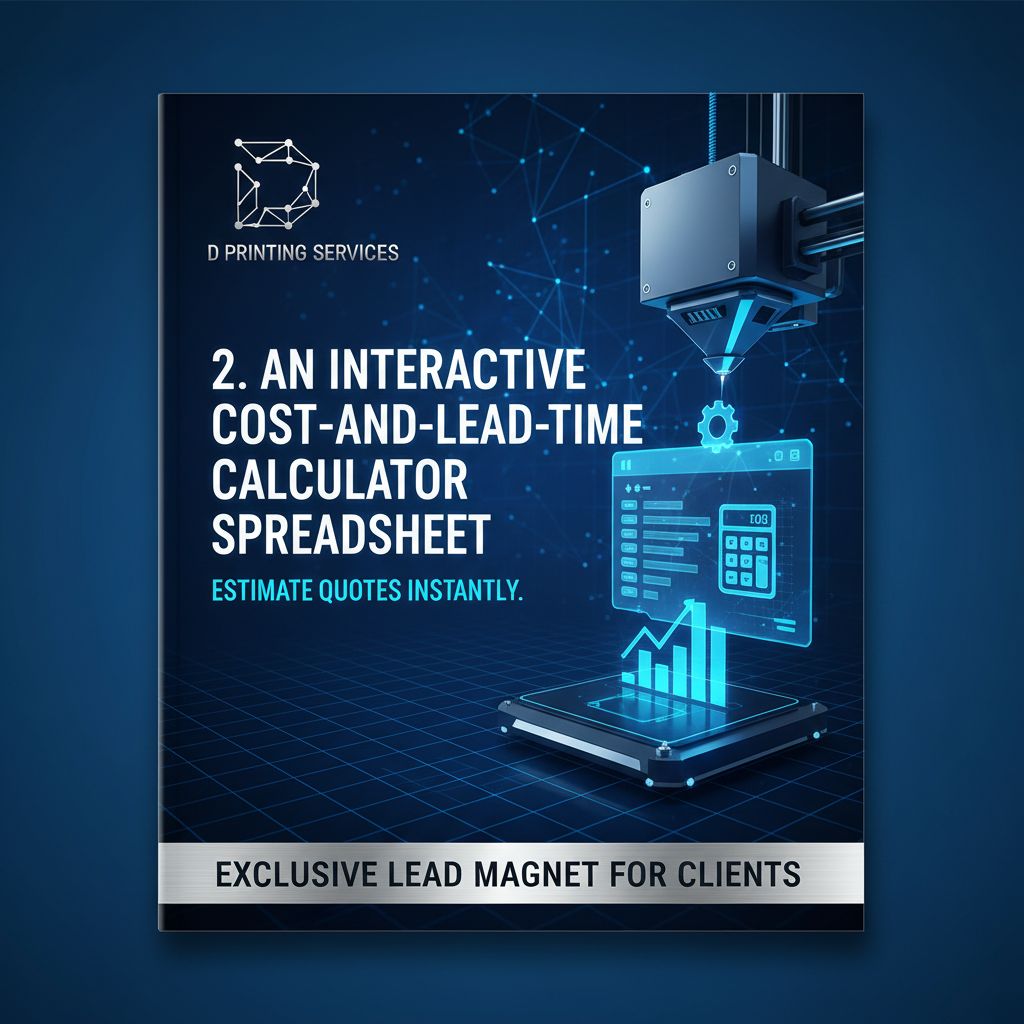
Why use this lead magnet?
Picture this: a potential customer visits your website at 2 AM, excited about a project idea, but they have no clue what it might cost or how long it’ll take. Instead of waiting until business hours to call (and potentially forgetting or finding a competitor), they can punch their specs into your interactive calculator and get an instant estimate. This tool transforms those late-night browsers into engaged leads while you’re sleeping, and it positions you as the tech-savvy, professional operation that has their act together.
Beyond just convenience, this calculator becomes your silent sales assistant that never takes a day off. When prospects can see transparent pricing upfront, they’re more likely to trust your business and move forward with serious inquiries. Plus, you’ll notice the quality of leads improve dramatically – no more time wasters asking for quotes on impossible projects or people shocked by realistic pricing. The calculator pre-qualifies leads and sets proper expectations, meaning the conversations you do have are with people ready to buy, not just tire-kickers browsing around.
3. A material selection cheat sheet comparing strength, finish, temperature resistance, and best uses.
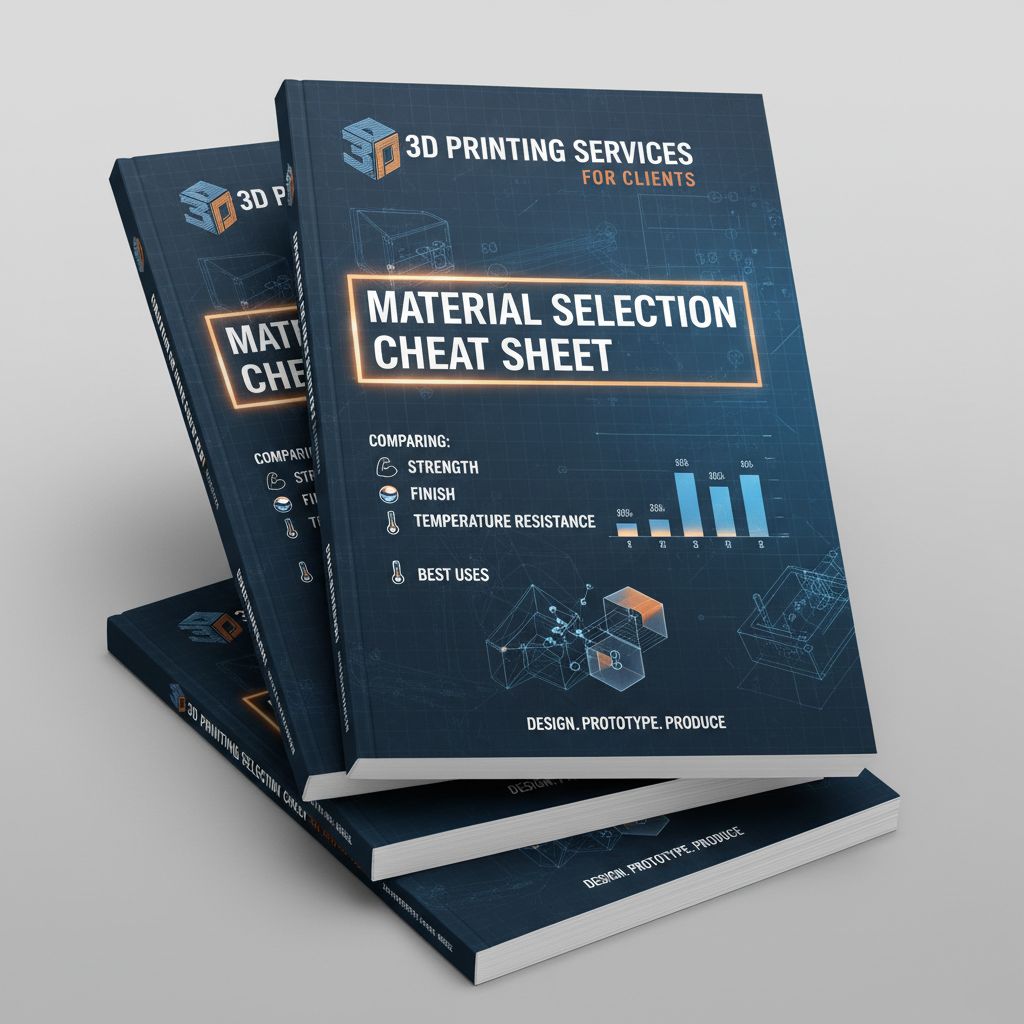
Why use this lead magnet?
Why Your 3D Printing Business Needs a Material Selection Cheat Sheet
If you’re running a 3D printing service, you’ve probably noticed that one of the biggest hurdles for potential clients isn’t convincing them that 3D printing is cool – it’s helping them figure out which material actually makes sense for their project. A material selection cheat sheet that breaks down strength, finish, temperature resistance, and best uses is pure gold for lead generation because it positions you as the expert who simplifies the confusing stuff. When someone downloads your cheat sheet, they’re essentially raising their hand and saying “I need help with a 3D printing project,” which is exactly the kind of qualified lead you want filling up your inbox.
The beauty of this lead magnet is that it works double duty – it attracts prospects while also educating them about the value you bring to the table. Instead of getting calls from people asking if you can print their kid’s toy in titanium (true story, right?), you’ll start attracting clients who understand material properties and are ready to have serious conversations about their projects. Plus, every time someone references your cheat sheet during their project planning, they’re thinking about your business. It’s like having a tiny sales rep sitting on their desk, gently reminding them that you’re the go-to person when they’re ready to move forward with their 3D printing needs.
4. A quick-guide to post-processing and finishing techniques with before-and-after photos.
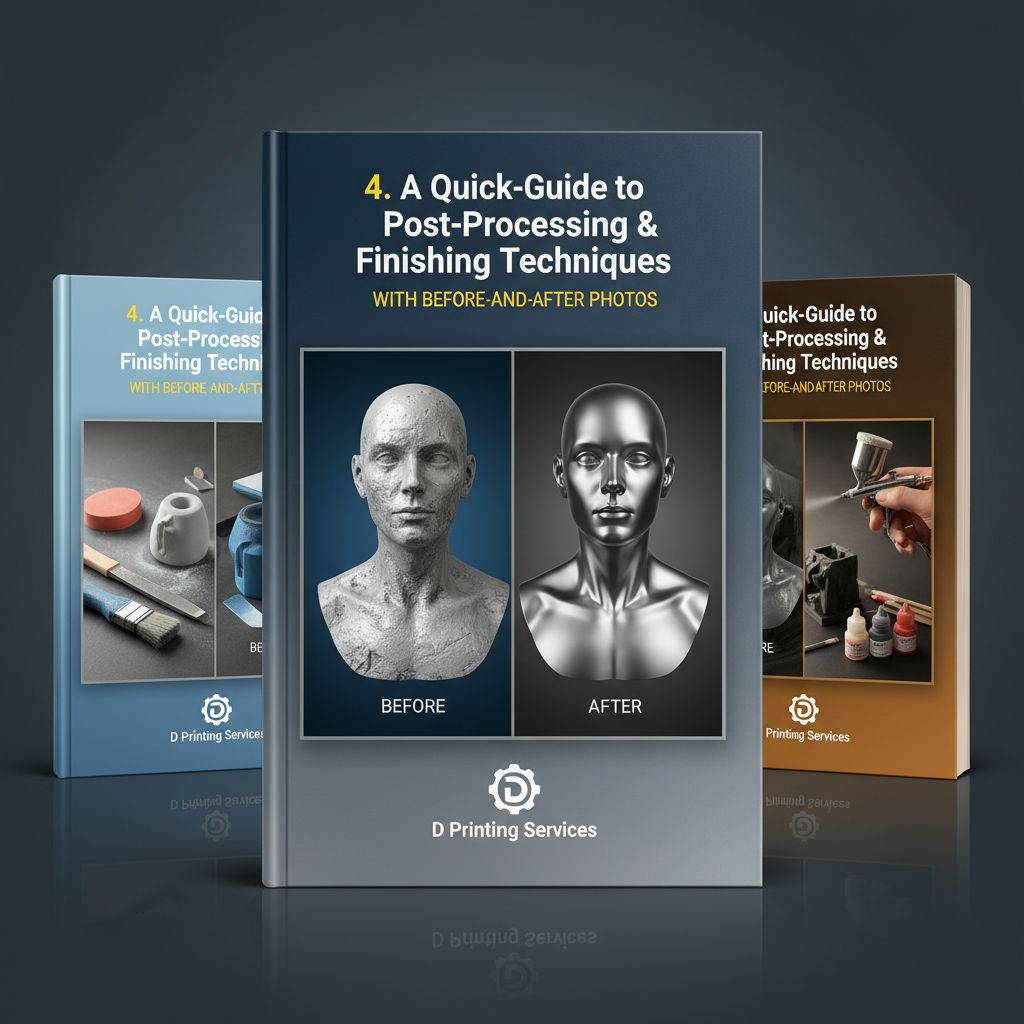
Why use this lead magnet?
You know that moment when a potential client sees your raw 3D prints and their face drops a little? They’re probably imagining those visible layer lines and rough surfaces in their final product. That’s exactly why this quick-guide to post-processing and finishing techniques is pure gold for your lead generation. Those dramatic before-and-after photos don’t just show off your technical skills – they completely shift how prospects view 3D printing from “cool prototype” to “professional-grade solution.” When someone downloads this guide, they’re essentially getting a sneak peek into the magic that transforms a basic print into something that looks injection-molded or CNC-machined.
Here’s the thing about running a 3D printing service: your biggest competition isn’t other printers, it’s the misconception that 3D printed parts always look “3D printed.” This guide tackles that head-on while positioning you as the expert who knows how to deliver premium results. Plus, it’s working for you 24/7 – prospects can download it at midnight, get excited about the possibilities, and be ready to hire you by morning. The best part? Everyone who downloads it has already shown they care about quality finishing, which means they’re probably willing to pay for those premium services that boost your profit margins.
5. A mini case-study pack showing 3 client projects with time/cost savings and an ROI worksheet.
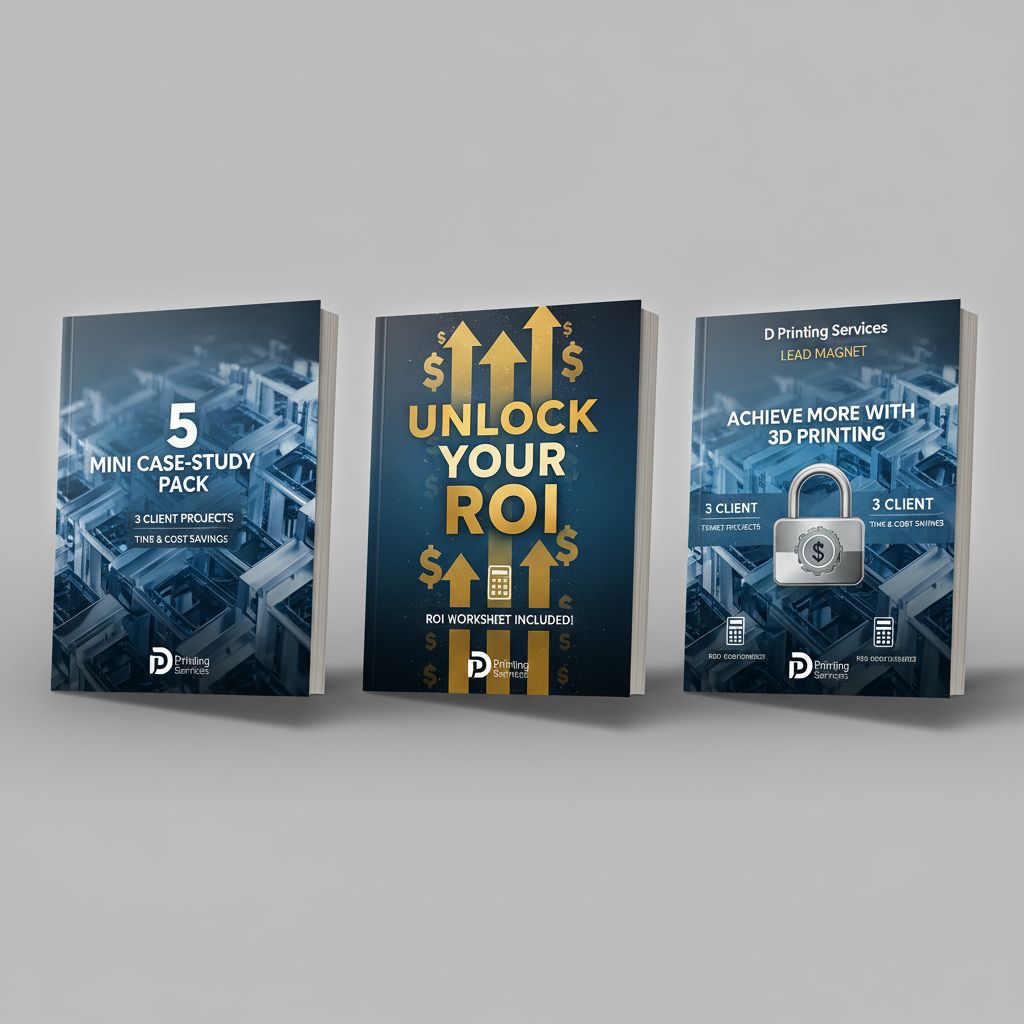
Why use this lead magnet?
Why This Case Study Pack is Your Secret Weapon for Landing More 3D Printing Clients
You know what separates successful 3D printing businesses from the ones struggling to get noticed? It’s not having the fanciest equipment or the lowest prices – it’s being able to show potential clients exactly what they’ll get when they work with you. This mini case-study pack does exactly that by giving you real, tangible examples of how your services save clients time and money. Instead of trying to explain the benefits of 3D printing in abstract terms, you’re literally showing them the numbers. When a potential client can see that you helped Company A cut their prototyping costs by 60% or saved Company B three weeks of development time, suddenly your services become a no-brainer investment rather than just another expense.
The ROI worksheet included in this pack is pure gold because it helps prospects do the math on their own specific situation. Rather than you having to convince them of the value, they’re convincing themselves as they plug in their numbers and see the potential savings. This kind of lead magnet works incredibly well because it positions you as a results-focused professional who understands business, not just someone who owns a 3D printer. Plus, when someone downloads this pack, you know they’re serious about understanding the financial impact – meaning they’re much more likely to become paying clients than someone who just downloaded a generic “intro to 3D printing” guide.




